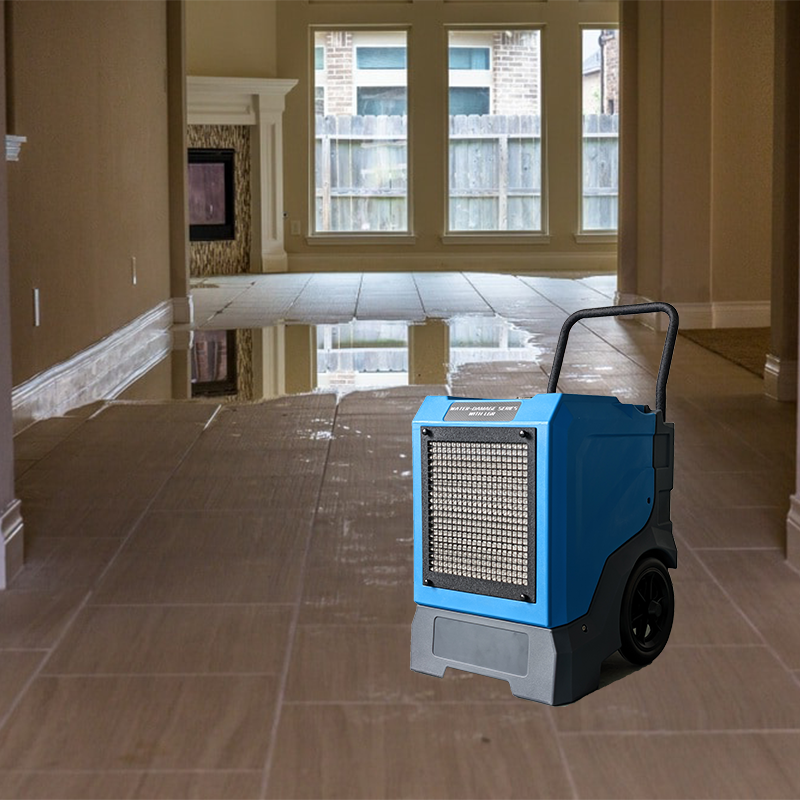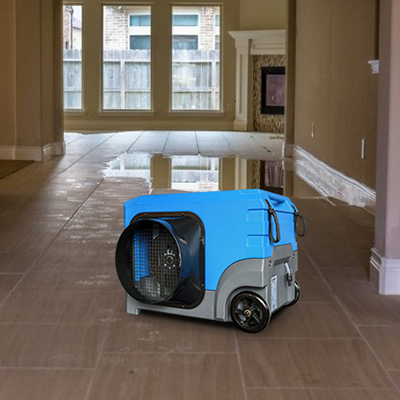Apply LGR Dehumidifiers for Water Damage Restoration
LGR (Low Grain Refrigerant) dehumidifiers are highly effective for water damage restoration due to their advanced moisture removal capabilities.
1. Place LGR dehumidifiers strategically around the affected area to maximize their effectiveness. The number of dehumidifiers required will depend on the size of the space and the severity of the water damage. Follow the professionals’ guidelines for spacing recommendations and capacity calculations.
2. Use air movers or fans in conjunction with the dehumidifiers to enhance airflow and promote faster drying. Proper airflow helps evaporate moisture from surfaces, allowing the water damage restoration dehumidifiers to remove the moisture from the air more efficiently.
3. Regularly monitor the moisture levels using moisture meters or hygrometers to assess the progress of the drying process. Adjust the positioning and settings of the energy-efficient dehumidifiers and air movers as needed to optimize drying efficiency.
4. Check and empty the water collection containers of the LGR dehumidifiers regularly to ensure uninterrupted operation. Some LGR dehumidifiers may also have options for continuous drainage, allowing the collected water to be automatically drained away. The LGR165L dehumidifier for flood damage adopts the direct drainage method that helps avoid the problem of forgetting to empty the water tank.
5. Seal off the affected area from unaffected areas to prevent the spread of moisture and humidity. Close windows and doors, and use temporary barriers or plastic sheeting if necessary. Maintain a consistent temperature to support the drying process and prevent condensation.
6. Regularly evaluate the drying progress to determine when it is safe to conclude the restoration process. Monitor moisture levels, check for signs of mold or mildew, and ensure the affected area has returned to a pre-damage condition.
Can Water Damage Dehumidifiers Run Constantly?
Water damage dehumidifiers are designed to run continuously, especially during the initial stages of water damage restoration. The continuous operation allows them to effectively remove excess moisture from the air and aid in the drying process.
1. Running the water restoration dehumidifier constantly ensures that it operates at its full capacity, maximizing moisture removal from the air. This is crucial during water damage restoration to expedite the drying process and prevent further damage, such as mold growth.
2. By keeping the dehumidifier running continuously, you can maintain a stable environment and monitor the moisture levels more accurately. This allows you to track the progress of the drying process and make necessary adjustments to achieve the desired moisture levels.
3. When a dehumidifier is turned off, the collected moisture in the unit can re-enter the air as it evaporates. The continuous operation helps prevent this reabsorption, ensuring that the moisture removed from the air remains captured in the dehumidifier's reservoir or is continuously drained away.
4. Constant dehumidifier operation helps maintain consistent humidity levels in the affected area. Fluctuating humidity levels can hinder the drying process and potentially promote mold growth. Running the smart dry dehumidifier continuously helps create a controlled environment that supports efficient and consistent drying.
It's important to note that the specific operating instructions for a water-damage dehumidifier may vary depending on the manufacturer and model. Preair provides high-quality LGR dehumidifiers for sale.
Post time: Jul-15-2023





